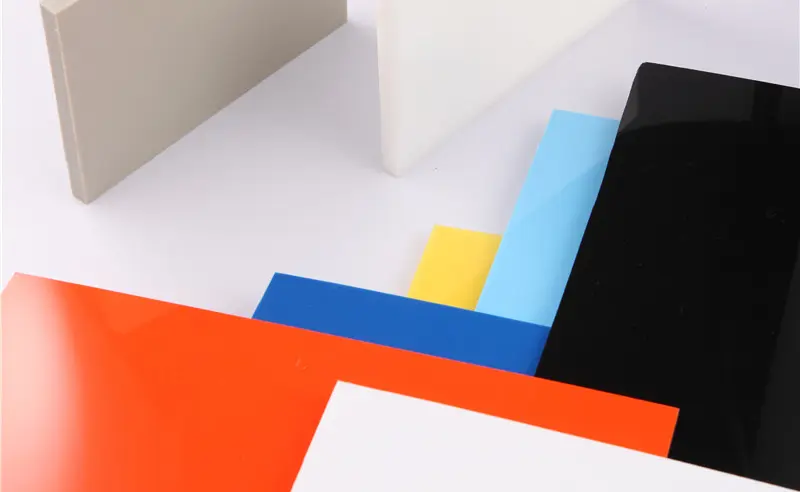Nov . 06, 2024 11:56 Back to list
Innovative Applications and Benefits of CPVC Boards in Construction and Industry
Understanding CPVC Board The Versatile Material for Modern Applications
In recent years, CPVC (Chlorinated Polyvinyl Chloride) boards have emerged as a popular choice in various industries, primarily due to their superior properties and versatility. While the name might not be familiar to all, the applications and benefits of CPVC boards are far-reaching, making them an essential material in construction, plumbing, electrical insulation, and more. This article aims to explore the features, benefits, and uses of CPVC boards in today's market.
What is CPVC Board?
CPVC board is made from a thermoplastic polymer that is derived from the chlorination of regular PVC. This process enhances the material's thermal and chemical resistance, as well as its overall durability. The boards are lightweight, rigid, and have a smooth surface that can be easily fabricated into various shapes and sizes. Unlike traditional wood or metal materials, CPVC boards do not warp, rot, or corrode, making them an excellent choice for both indoor and outdoor applications.
Features of CPVC Boards
1. Chemical Resistance One of the standout features of CPVC boards is their resistance to a wide range of chemicals, including acids, alkalis, and salts. This makes them particularly useful in environments where exposure to harsh substances is common, such as chemical processing plants.
2. Thermal Resistance CPVC can withstand higher temperatures compared to standard PVC, making CPVC boards suitable for hot water applications. They can typically handle temperatures of up to 93°C (200°F), allowing them to be used in plumbing and drainage systems without fear of deformation.
3. Non-toxic and Eco-friendly CPVC boards are free from phthalates and lead, making them a safer option for applications involving food and water. Their production process is also considered more environmentally friendly, as they can be recycled and reused.
4. Lightweight and Easy to Handle Compared to other construction materials, CPVC boards are significantly lighter, which simplifies transportation and installation. They can be easily cut, shaped, and joined using standard tools, making them a favorite among contractors and builders.
Benefits of Using CPVC Boards
cpvc board

The advantages of adopting CPVC boards extend beyond their inherent features. Some of the key benefits include
- Cost-Effective While the initial investment in CPVC boards may be higher than that of traditional materials, their longevity and low maintenance requirements can lead to significant cost savings over time. Their resistance to wear and corrosion means fewer replacements and repairs.
- Versatility CPVC boards are suitable for a variety of applications. They can be used in everything from building construction and interior design to signage and display units. Their ability to be fabricated into diverse shapes adds to their appeal.
- Fire Retardant CPVC is recognized for its self-extinguishing properties, providing added safety benefits in construction and electrical applications. In the event of fire, CPVC boards release less smoke and harmful fumes compared to other materials.
Applications of CPVC Boards
1. Plumbing Systems CPVC boards are extensively used in hot and cold water plumbing systems, as well as in drainage applications. Their resistance to scaling and chlorine makes them a popular choice for domestic and commercial plumbing.
2. Electrical Insulation Due to their excellent dielectric properties, CPVC boards are frequently used as insulating materials in electrical applications. They can effectively safeguard electrical components against moisture and corrosion.
3. Furniture and Interior Design With an attractive finish and the ability to be colored and textured, CPVC boards are increasingly being used in furniture design, cabinetry, and other interior applications where aesthetics matter.
4. Signage The lightweight and durable nature of CPVC makes it an ideal choice for outdoor and indoor signage that is resistant to fading and weather damage.
In conclusion, CPVC boards represent a modern solution to various challenges faced in construction and manufacturing. Their durability, resistance to chemicals and heat, and versatility make them a compelling choice for anyone looking to invest in high-quality materials. As industries continue to innovate and seek sustainable options, the demand for CPVC boards is likely to grow, reinforcing their place in modern applications.
-
High-Quality PPR Pipes and Fittings Durable ERA PPR & PVC PPR Solutions
NewsJul.08,2025
-
Black HDPE Cutting Board - Durable, Non-Porous & Food Safe HDPE Plastic Cutting Board
NewsJul.08,2025
-
High-Quality CPVC Panel Durable HDPE & PVC Panels Supplier
NewsJul.08,2025
-
Double PE Welding Rod Supplier - High Strength, Durable & Versatile Welding Solutions
NewsJul.07,2025
-
High-Quality PVC-O Pipe Supplier Durable 75mm PVC Pipe & Connections Leading PVC Pipe Company
NewsJul.07,2025
-
HDPE Drainage Pipe Supplier – Durable & Corrosion-Resistant Solutions
NewsJul.06,2025

